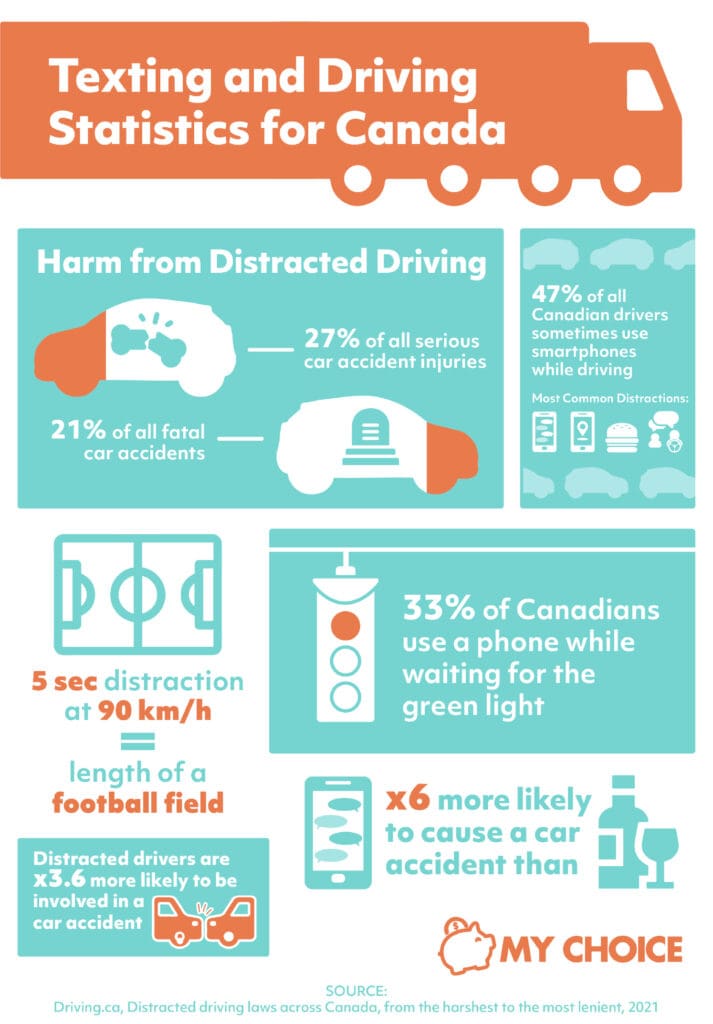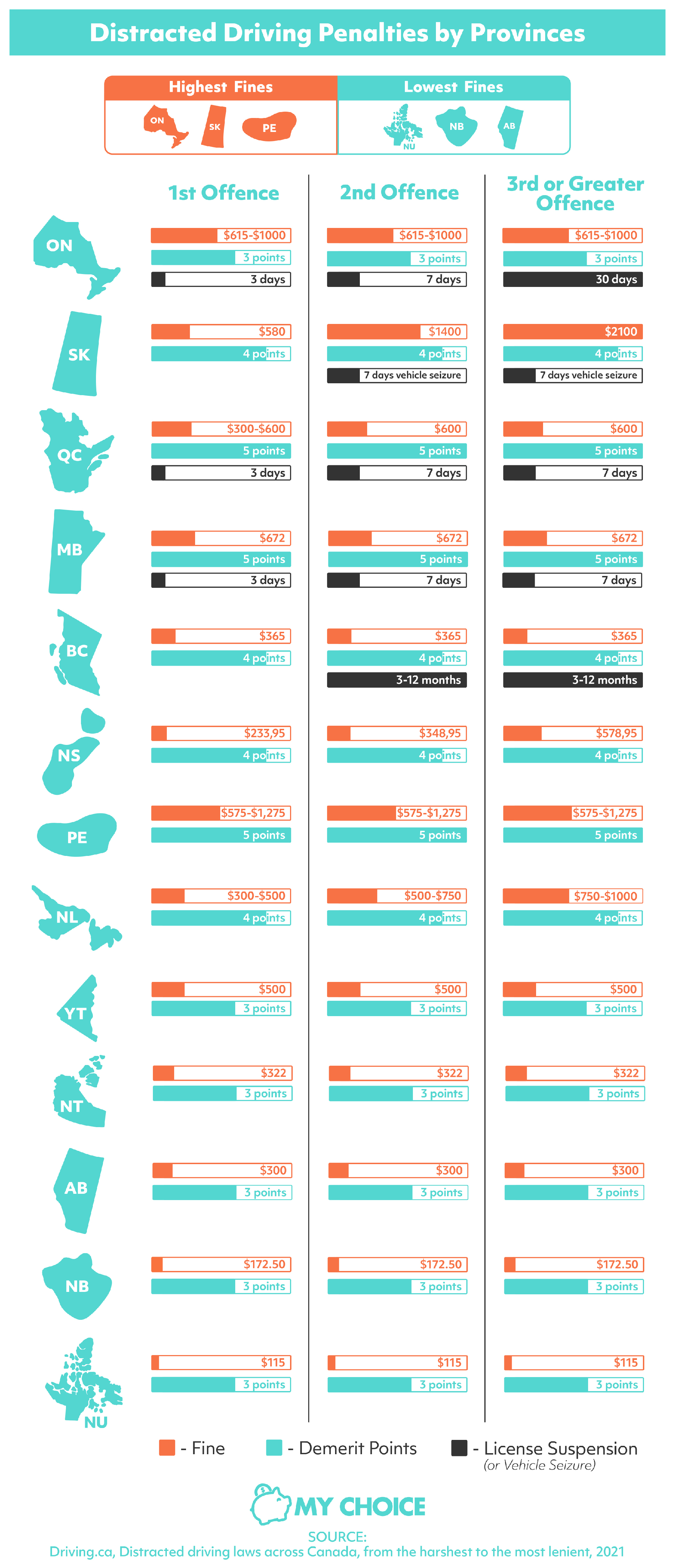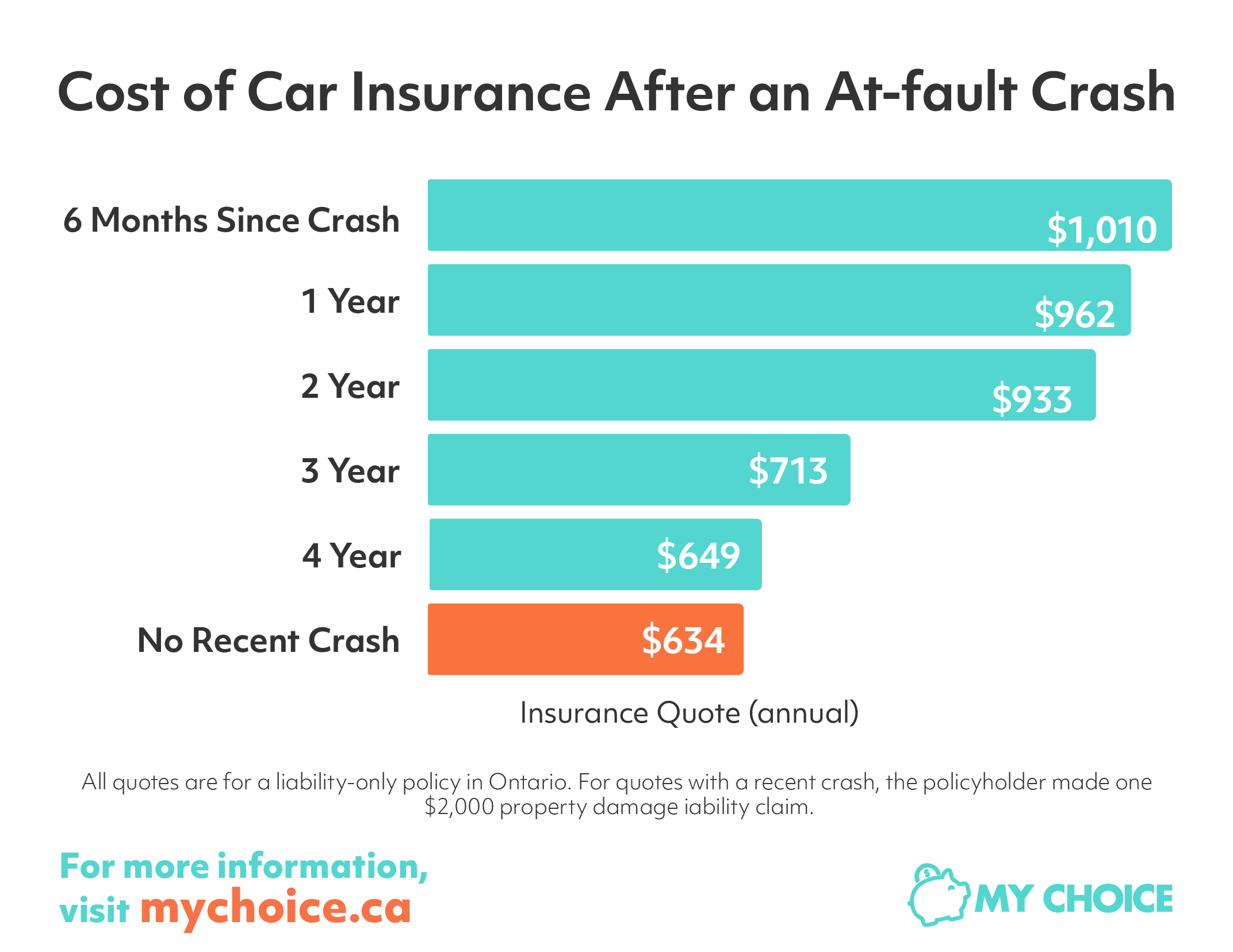Despite the increasing distractions in the average Canadian’s lifestyle, most Canadians have welcomed these distractions into their driving habits regardless of the consequences.
- 3 out of 4 Canadian drivers admitted to driving distracted
- Yet, most Canadians also supported distracted driving laws
- One person is injured in a distracted-driving collision every half hour in Ontario
- There were 5.2 motor vehicle deaths per 100k residents in 2018
- A 2019 survey concluded that 25% of Canadians text while driving
- Usage of cell phones while driving has caused 1.6 million car crashes annually
Ontario has laws describing certain activities that fall under “distracted driving”, but it can be unclear as to what activities are legal to engage in when driving. Should a driver be doing anything other than driving when at the wheel, and how are these activities defined?
What Activities Fall Under Distracted Driving?
Ontario’s “distracted driving laws” can be a bit confusing to understand. On one hand, it is clear that drivers are not permitted to use hand-held devices. This applies to communication devices as well, and not just entertainment devices.
Even at a red light, it is illegal to use a phone or a hand-held wireless communication device to contact anyone, the only exception being if a driver has to call 911 in case of an emergency. It is prohibited to watch videos, use tablets, operate gaming consoles, or watch a video on a device or display screen.
How should drivers use GPS?
A GPS device is okay to use with voice commands only, but built-in GPS display screens or GPS activity on a secure, mounted phone is allowed. Drivers can still use hands-free wireless devices to communicate. This includes lapel buttons, earpieces, or Bluetooth devices.
The Fine Line Between “Distracted” and “Careless” Driving
What does the law state?
While the list of activities under distracted driving are clear, what’s the case with grabbing a snack while driving? Here’s what Ontario’s distracted driving laws state about eating and driving: “Actions such as eating, drinking, grooming, smoking, reading and reaching for objects are not part of Ontario’s distracted driving law. However, you can still be charged with careless or dangerous driving.”
FAQ
1) How are these activities classified?
Activities that fall under the “distracted driving” umbrella are classified according to how much attention they require. However, there isn’t a hard line between what can and can’t be dangerous. Looking away from the street, even momentarily, can distract a driver, impair their judgement and easily result in an accident.
2) What can drivers to do make sure they don’t cross that line?
The best way to avoid crossing the line is to avoid all unnecessary activities altogether. We also have a 6-step checklist at the end of the page to help drivers avoid distracted driving accidents.
3) Is eating and driving allowed?
It’s never a good idea to eat when driving, and there’s never a condition where the driver would have no other choice. It is much better to find a safe place to pull over than to take the risk and grab a snack in one hand while holding the steering wheel with the other.
4) Which devices can drivers use when driving?
It is highly recommended that drivers switch their phones to silent mode when driving. However, using hands-free GPS devices is allowed.
5) Are young drivers unaware of these rules?
No. Almost 100% of young drivers admitted to knowing that handheld device usage is prohibited when driving (even at a red light). Yet, 55% of young drivers also admitted to reading texts when driving, and 44% responded to those texts as well.
How Common is Distracted Driving?
At any time during the day, over 660,000 drivers are trying to text and drive. With there being only a thin line between distracted and careless driving, stats show that it is a lot more common than one might expect. Distracted driving causes about 17% of fatalities in Ontario.
According to the National Highway Traffic Safety Administration (NHTSA) and the Virginia Tech Transportation Institute (VTTI), about 80% of crashes and 65% of near-crashes result from some form of driver inattention in the seconds leading up to the event.
Here is a graph showcasing distracted driving trends over time:

As per Transport Canada’s National Collision Database, distracted driving caused about 21% of fatal collisions and 27% of serious injury collisions in 2016. Just a decade ago, these stats stood at 16% and 22% respectively.
The Most Dangerous Activities that Cause Accidents
The study also listed four of the most dangerous activities that led to distracted driving (in the following order):
- reaching for an object
- looking out at an object
- applying make-up
- using a hand-held device
A lot of Canadians have admitted to being okay with performing these activities regardless of these stats, and there hasn’t been a downward trend in spite of the proven information. In fact, most drivers believe that they can text and drive without any issues.
But how often do people face the consequences of distracted driving, exactly?
What are the Penalties for Distracted Driving?
A) For drivers who have an A, B, C, D, E, F, G and/or M licence, the penalties for distracted driving are as follows:
- First conviction: a fine of up to $1000, 3 demerit points, 3-day suspension
- Second conviction: a fine of up to $2000, 6 demerit points, 7-day suspension
- Third and any further conviction(s): a fine of up to $3000, 6 demerit points, 30-day suspension
B) For drivers who hold a G1, G2, M1 or M2 licence, and are convicted of distracted driving, the fines are the same as those for drivers with A to G licences. However, they won’t receive any demerit points.
C) With “dangerous driving”, these penalties get even worse. Dangerous driving can lead to jail terms of up to 10 years for causing bodily harm or up to 14 years for causing death.

It is important to note that the penalties aren’t the only cost; the driver will also be paying extra for insurance for a long time. Here’s how these penalties can affect insurance rates:

Technology and Distracted Driving
Drivers are 3.6 times more likely to crash if they drive while using an electronic device, and yet, most Canadians admitted to using a device when driving. Researchers at the University of Utah studied the effects of in-vehicle technology on the brain and found that the devices meant to add convenience are actually taxing brain mechanisms and causing distracted driving.
The team stated that using your voice to communicate with computers requires a great deal of mental energy. The part of the brain used to control electronic devices is the same one that makes important decisions when driving.
6-Step Checklist to Avoid Distracted Driving
Distracted and careless driving encompasses a lot of things; what exactly should you keep in mind when driving? Here’s an easy 6-step checklist to avoid distracted driving.

Endnote
An important stat to note here is that the number of distracted driving accidents have always been significantly higher than those caused by driving under the influence. Eight out of ten collisions in Canada are caused by distracted driving; that’s right, 80% of collisions in Canada are caused by simple, avoidable actions. When driving, it is extremely important to have your attention focused on the street and the area around your car, particularly the blind spots around your car. In such situations, adding another, unnecessary distraction is just poor decision-making on a driver’s part. Even if the action itself might not be classified as illegal under the distracted driving laws, it never hurts to just have that snack a bit later instead.






